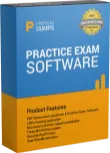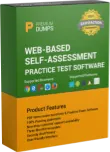
Get Google Associate-Android-Developer Exam Dumps
Google Associate Android Developer Exam Dumps
This Bundle Pack includes Following 3 Formats
Test software
Practice Test
Answers (PDF)

Associate-Android-Developer Desktop Practice
Test Software
Total Questions : 128

Associate-Android-Developer Questions & Answers
(PDF)
Total Questions : 128

Associate-Android-Developer Web Based Self Assessment Practice Test
Following are some Associate-Android-Developer Exam Questions for Review
In application theme style, value statusBarColor (
Content labels. What attribute to use to indicate that a View should act as a content label for another View?
''Set the activity content to an explicit view. This view is placed directly into the activity's view hierarchy. It can itself be a complex view hierarchy.'' This can be done by calling method:
Which statement is most true about layout_constraintLeft_toRightOf and layout_constraintStart_toEndOf constraints ?
Assume that you have the following situation: The app code calls for R.string.text_a Three relevant resource files are available:
- res/values/strings.xml, which includes text_a in the app's default language, in this case English.
- res/values-mcc404/strings.xml, which includes text_a in the app's default language, in this case English.
- res/values-hi/strings.xml, which includes text_a in Hindi.
The app is running on a device that has the following configuration:
- The SIM card is connected to a mobile network in India (MCC 404).
- The language is set to Hindi (hi).
Which is the correct statement below?
Unlock All Features of Google Associate-Android-Developer Dumps Software
Types you want
pass percentage
(Hours: Minutes)
Practice test with
limited questions
Support